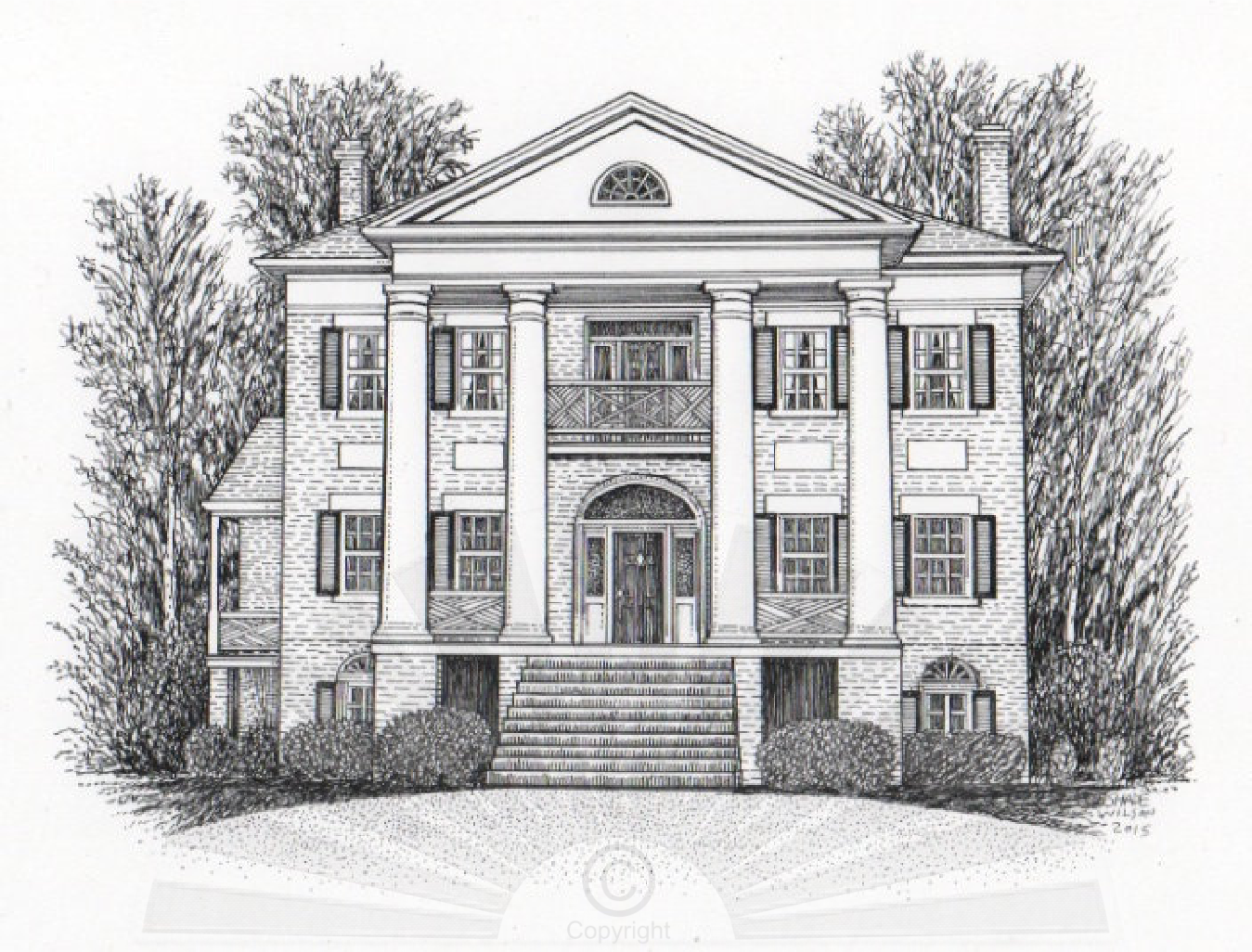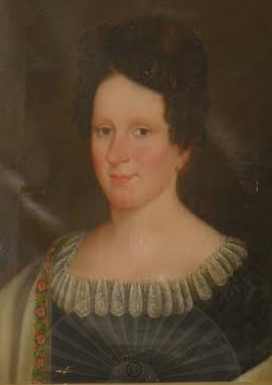
John Howe Peyton's Montgomery Hall





Early History
- c.1732 John Lewis (1678-1762) settled in an area then in Spotsylvania County, Virginia that became a part of Orange County, Virginia in 1734. This area became a part of Augusta County in 1738, near present-day Staunton, Virginia.
- 1736 William Beverley (1696-1756) received a Crown Grant of over 118,000 acres that included the area occupied by John Lewis
- 1738 Augusta County was created from a part of Orange County and originally encompassed a broad area from which other counties and parts of other states were later created.
- 1745 The Augusta County government was organized, a necessity as more people settled there
- 1746 Thomas Lewis (1718-1790), a son of John Lewis, created the initial town plan for William Beverley
- 1747-1749 Thomas Lewis created a town plat that was approved and recorded and Beverley’s Mill Place became the town of Staunton
- 1751/1754 Israel Christian (c. 1720-1784), one of the first trustees of the town of Staunton in Augusta and later a representative of Augusta County in the Virginia House of Burgesses, purchased tracts of land in Augusta County
- 1763 Israel Christian conveyed 300 acres to his son-in-law, William Fleming (1729-1795). Fleming later served as Governor of Virginia in 1781.
- 1765 Robert Beverley conveyed 560 acres in Augusta County in two tracts to William Fleming
- 1767 William Fleming conveyed tracts of land to Robert Reed


Robert Reed/Margaret Reed (c. 1747-1827)
- 1767 William Fleming conveyed 740 acres in Augusta County to Robert Reed
- 1787 Death of Robert Reed. At the time of his death, Reed owned over 800 acres in Augusta County and property in Staunton.
- First known record of enslaved African-Americans working on the property later known as Montgomery Hall
- 1810 Margaret Reed conveyed her husband’s former property in Augusta County and these lands became the core tracts of three important properties: John Howe Peyton’s “Montgomery Hall,” Chapman Johnson’s “Walnut Hills,” and Archibald Stuart’s “Buttermilk Spring.”


John Howe Peyton (1778-1847)
- 1810 John Howe Peyton purchased 2 tracts of 124 acres and 118 acres from Margaret Reed, the first tracts of the property later known as Montgomery Hall.
- 1811-1839 Peyton purchased additional tracts of land. At the time of his death in 1847, Montgomery Hall consisted of 820 acres.
- 1820 Death of Peyton’s first wife, Susannah Smith Madison. They had one surviving child, William Madison Peyton.
- 1821 Peyton married Ann Montgomery Lewis, great-granddaughter of John Lewis, known as the founder of Augusta County and Staunton. Susannah Smith Madison and Ann Montgomery Lewis were first cousins. Their mothers were sisters, the daughters of William Preston of “Smithfield,” and an early landowner and representative in Augusta County.
- 1822 Birth of Susan Madison Peyton July 4 in Staunton
- 1822-1824 Construction and completion of Montgomery Hall. Other improvements made during Peyton’s ownership of the property included: Later alterations to the house, a brick kitchen, a brick smokehouse, a brick hive house, a brick cottage, an ice house, a barn, 85′ x 100′ with a stone basement, a mule house, a carriage house, storehouses, a corn house, workshops, including a blacksmith’s shop, and quarters for enslaved African-Americans
- 1824-1841 Nine of Peyton’s children born at Montgomery Hall: John Lewis in 1824, Anne Eugenia in 1827, Mary Preston in 1829, Lucy Garnett in 1830, Elizabeth Trent in 1832, Margaret Lynn in 1835, Yelverton Howe in 1838, Virginia Frances in 1841, and Cornelia Bernard in 1843.
- 1837 Peyton’s mother, Anne Hooe, widow of John Rowzee Peyton, died January 1 at Montgomery Hall
- 1839 John Walker Goss and Polydora Eugenia Lewis, sister of Ann Montgomery Lewis Peyton, married at Montgomery Hall
- 1842 John Brown Baldwin and Susan Madison Peyton married at Montgomery Hall
- 1847 John Howe Peyton died April 3 at Montgomery Hall
- 1850 Ann Montgomery Lewis Peyton died July 15 at Montgomery Hall
- 1850 Robert Asher Gray and Mary Preston Peyton married July 30 at Montgomery Hall
- 1850 Peyton’s executors sold Montgomery Hall with 300 acres to William J. Shumate
- 1851-1853 Peyton’s executors sold Montgomery Hall’s remaining acreage.


William J. Shumate (1822-1883)
- 1850/1851 William J Shumate purchased Montgomery Hall and 300 acres of the property in 1850. The deed was recorded January 1, 1851.
- 1850-1871 Enslaved African-Americans lived at Montgomery Hall and after the Civil War emancipated African-Americans lived on the property. African-Americans were baptized in the creek by Montgomery Hall.
- 1851 Shumate’s wife, Elizabeth Ann Campbell, died at Montgomery Hall January 6, shortly after the birth of her fourth child. This unnamed infant son died January 13 at Montgomery Hall. There were two surviving children of Shumate’s first marriage.
- 1853-1869 Shumate bought and sold tracts, adding to and subtracting from Montgomery Hall’s acreage. Three acres were subtracted for construction of the railroad.
- 1855-1858 Two children born to Shumate and his second wife
- Confederate soldiers at Montgomery Hall during the Civil War
- 1869 Shumate sold 40 acres to Dr. Barnas Sears, former president of Brown University and then general agent of the Peabody Fund. Sears used this property as a farm and country retreat.
- 1871 Montgomery Hall was sold at public auction with the remaining 150 acres.


William W. Donaghe (1797-1873)
- 1871 William W. Donaghe, Sr. was the highest bidder on October 25 at a public auction of Montgomery Hall and about 150 acres.
- Donaghe also owned Spring Farm. Some of the former Spring Farm property was later purchased from the executor of his estate for use as Staunton’s town water supply and later developed as Gypsy Hill Park.
- Donaghe’s wife, Mary Briscoe Baldwin, was related to the Peyton, Brown, Baldwin, and Stuart families through birth and marriage.
- African-Americans were baptized in the creek by Montgomery Hall
- 1873 William W. Donaghe died February 21 at Montgomery Hall


Henry Dwight Peck (1836-1927)
- 1873 Henry Dwight Peck purchased the Montgomery Hall farm tract of about 150 acres from the Donaghe estate in the fall of 1873 and moved there from Connecticut with his wife, mother, and two children in November, 1873.
- 1875-1880 Three of H. D. Peck’s children were born at Montgomery Hall: Horace Sill, Louis Tucker, and Frances Griswold
- Peck installed a furnace (Montgomery Hall’s first central heating system), added Montgomery Hall’s first bathroom, and made exterior alterations to the house
- 1877 Mary Sill Gold Peck, mother of H. D. Peck, died at Montgomery Hall
- 1901 George Alsop Sprinkel, Jr. and Frances Griswold Peck were married at Montgomery Hall October 16
- 1902 John Edwin Williams and Jennie Mae Peck were Married at Montgomery Hall September 18
- 1902 Peck sold the Montgomery Hall farm tract to Emma J. Duryea Walter


Emma J. Duryea Walter (1866-1934) and Frank Walter (1854-1915)
- 1902 The Montgomery Hall farm tract of about 150 acres was conveyed to Emma J. Walter in October, 1902.
- 1903 Daughter born
- 1903 Frank Walter and Emma Walter contracted with architect T. J. Collins to design a two-story addition for Montgomery Hall and supervise the construction and other alterations and renovations specified in their agreement.
- 1903 The kitchen and smokehouse were torn down
- 1904-1910 Emma Walter and Frank Walter purchased additional parcels of land adjacent to the property
- 1906 John Howe Peyton’s original Montgomery Hall was completely destroyed by fire February 11
- 1906 T. J. Collins completed drawings and plans for a replacement house
- 1906-spring, 1907 Construction and completion of the replacement Montgomery Hall house
- 1907 John Duryea, Emma Walter’s father, died May 12 at Montgomery Hall.
- 1911 Emma Walter and Frank Walter conveyed the Montgomery Hall farm tract and additional acreage as one parcel of approximately 410 acres to Bates Warren.


Bates Warren (1869-1940) and Lisette B. Warren (1881-1965)
- 1911 The Montgomery Hall tract of about 150 acres, tracts owned by Frank Walter, and additional tracts owned by Emma Walter were conveyed to Bates Warren, a lawyer and real estate developer, as one parcel of about 410 acres.
- Warren and his wife lived in Washington, D. C. and during their ownership Montgomery Hall was a summer residence
- Warren planted thousands of apple trees, adding to Montgomery Hall’s existing orchards.
- 1913 Warren had a brochure created and printed prior to advertising the property for sale
- 1913 Montgomery Hall was sold to John A. Kennedy


John A. Kennedy (1876-1941) and Kerah C. Kennedy (1876-1959)
- 1913 Bates Warren and Lisette B. Warren conveyed 410 acres, including the Montgomery Hall tract of 150 acres, to John A. Kennedy in August
- 1915 Beginning in 1915, many of Kennedy’s children were born at Montgomery Hall
- Kennedy raised champion Thoroughbred and Standardbred horses at Montgomery Hall and his other farms


D. D. Chidester (1851-1927) and Elizabeth M. Chidester (1861-1931)
- 1927 Davitt D. Chidester purchased the Montgomery Hall Farm tract and deeded the property to John A. Kennedy. Chidester died later in 1927.
- 1928 Elizabeth M. Chidester, widow of D. D. Chidester purchased the same tract minus eight acres at public auction
- 1929 Mrs. Chidester was introduced to Maude Carwell Anderson by Mrs. John A. Kennedy. Montgomery Hall was unoccupied and had been vandalized. Mrs. Chidester and Mrs. Anderson worked out a caretaker’s agreement.
- 1929-1933 Maude Carwell Anderson (1889-1983) lived with her four children at Montgomery Hall
- 1932 Alexander C. Thomas purchased the Montgomery Hall tract of about 154 acres at public auction


Alexander C. Thomas (1884-1953) and Elizabeth D. Thomas (1884-1969)
- The Montgomery Hall tract of about 154 acres was conveyed to Alexander C. Thomas
- Lawrence Washington Howe Peyton (1872-1949), a great-grandson of John Howe Peyton, acquired the brick cottage on the Montgomery Hall land, dismantled it, and rebuilt the cottage nearby at Steephill, a house built by his father, John Lewis Peyton (1824-1896).
- Alexander C. Thomas operated a dairy farm at Montgomery Hall during his ownership of the property.


City of Staunton
- 1946 The Montgomery Hall property of about 154 acres was conveyed by Alexander C. Thomas and Elizabeth D. Thomas to the City of Staunton. The City of Staunton purchased the property for the development of an African-American Park. Parks were segregated and African-Americans were only allowed entrance in Staunton’s Gypsy Hill Park one day during the year. Members of the local African-American community, led by Rev. T. J. Jemison of Mount Zion Baptist Church, successfully lobbied Staunton City Council for a park of their own, leading to the the City of Staunton’s purchase of the Montgomery Hall property for that purpose.
- 1946-1947 The African-American committee members were given little money by City Council for establishing the park and the local African-American community united to come up with additional money, items, and equipment necessary for creating the park. They truly struggled to achieve this, but were successful, and also received in-kind donations from local African-American and white individuals and businesses.
- 1946-1969 Montgomery Hall Park was organized, maintained, and run by a committee of prominent members of the local African-American community who were appointed by Staunton City Council. The local parks were desegregated in the 1960s and both Montgomery Hall Park and Gypsy Hill Park were then open to everyone.
- John L. Johnston was Montgomery Hall Park’s first caretaker. His son was the last child born at Montgomery Hall.
- 1947 Opening Day of Montgomery Hall Park was on July 4, 100 years after the death of John Howe Peyton and 40 years after the completion of the Walter family’s replacement house
- 1948 Elizabeth Gay Catlett, a daughter of Richard Henry Catlett and Fannie Bolling Gay, directed in her will that $10,000.00 of her estate was to be used for the benefit of the local African-American community and that her sister, Amy Pendleton Catlett would decide how that sum would best be used for their benefit. The money was used to build a pool at Montgomery Hall Park. Another sister of Elizabeth G. Catlett was Margaret Erskine Catlett, wife of Lawrence Washington Howe Peyton, a grandson of John Howe Peyton.
- 1974-1976 The development of a master plan and grant approvals led to renovations and improvements at Montgomery Hall Park
- 1977-1978 A study was conducted to determine the fate of the house at Montgomery Hall Park. The house was saved and later renovated.
- The house was renamed in honor of Irene Givens for her service and dedication to Montgomery Hall Park over many years of its operation. The house became the offices of Staunton Parks & Recreation and location for their program activities.
- 2006 A 60 Year Celebration was held at Montgomery Hall
- 2012 A notebook that recorded the Montgomery Hall Park committee minutes and activities from 1946-1969 and the only written history of Montgomery Hall as an African-American park, was preserved and protected by Helen Bolen Becks, committee secretary during most of those years, and donated to the Augusta County Historical Society.
- 2013 The first Montgomery Hall Park Homecoming was held on July 13. Proceeds from the event benefited the African-American Heritage Festival. Jane Gray Avery shared some of her research, including a history of Montgomery Hall, 1810-1947, and details of the previously unstudied lives of enslaved African-Americans who once lived on the property.
- 2015 Dedication of a Virginia Historical Highway Marker in recognition of Montgomery Hall Park’s history as an African-American park during segregation beginning in 1947
Montgomery Hall History
Navigation
Copyright © 2012-2024 Jane Gray Avery
All Rights Reserved- Content from this website including text and images may not be used or reproduced without prior written permission.



